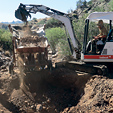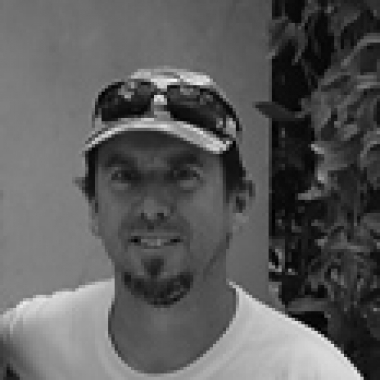All Articles
California Water Board Tries to Restrict Dredging
May 2010 by Scott Harn
In what may be just the beginning of a disturbing trend in California, the North Coast Regional Water Quality Control Board voted to place restrictions on suction dredging while addressing Total Maximum Daily Load (TMDL) limits on the Klamath River.TMDLs are described as pollutant sources in a river, and prescribing limits is a regulatory tool agencies use to prevent use and development.
Sometime following the close of public comments (February 9, 2010) on TMDL restrictions for the Klamath River, the Water Board added language pertaining to suction gold dredging. Several members of the mining community learned of the Water Board’s actions and attempted to intervene.
Jim Foley, a member of the New 49’ers and a property and mining rights advocate, attended the North Coast Water Board meeting on March 24, 2010. Following are some comments he provided:
Although the staff repeatedly spoke of how they used the best science, I failed to see that they used any science when it came to thermal refugia. For instance, they had no science to identify any thermal refugia. They just assumed that any creek that flowed into the Klamath was thermal refugia; some of these creeks slow to a trickle in summer and some even dry up.
The staff had no science to show any harm done in any supposed thermal refugia by suction dredge mining. This thermal refugia issue is supposedly to protect fish, but no harm or adverse effects were identified that would warrant even addressing this issue. It is all supposition.
Here is a quote from one of these scientists, Peter Moyle: “Given current levels of uncertainty about the effects of dredging, where threatened or endangered aquatic species inhabit dredged areas, fisheries managers would be prudent to suspect that dredging is harmful to aquatic resources.” This is pure personal opinion, not best science, but this is what the Water Board used and called it best science.
There was a presentation by a female board member about dissolved oxygen in a stretch of river between Scott River and Hoopa. In all other stretches of river, the dissolved oxygen drops five to ten percent in summer. This stretch of river between Scott River and Hoopa showed no drop in dissolved oxygen in summer, for a stated 20+ year period. She said she had 20+ years of “baseline” data to support her numbers. The only thing wrong with that is that she could not have baseline data for this scenario because suction dredging is not happening at the time of year when the data was supposedly collected. Her data reflected numbers with suction dredging going on at the same time.
My friend and mining partner, Alan London, commented that there had to be some special reason for this discrepancy. He said that the only reason he could think of is that this section of river is the most heavily dredged section. Suction dredges, by their nature, oxygenate the water.
She was asked to address this seeming discrepancy in her presentation by the board near the end of the meeting. She explained that she didn’t like the numbers that the computer model gave her for this section of river, so she “adjusted the numbers by hand” to more accurately reflect what she thought they should be.
The resolution passed unanimously. They were very happy about this and were congratulating each other for a job well done. High fives were in order all around.
This is not the end of this—it was only a resolution to adopt this draft in its present form. There will be more revisions and more opportunities for public comment before the Klamath River TMDL is finalized.
I was approached by a high ranking board member after the meeting. He was lamenting the fact that they (the board) knew so little about suction dredging and mining in general. He said it would be great if the miners could put on a presentation about what we do and the science and law we operate under.
I told him that we could arrange such a presentation. He was very appreciative and said that he could arrange to have the whole board meet at any place the miners choose. Dave McCracken (New 49’ers), myself and the others who have been close to these issues will be working to put together a suction dredge mining presentation for them.
I also turned in written comments and I hand-carried written comments from Dave McCracken, Joe Greene, and Claudia Wise. (Joe Greene and Claudia Wise are retired US EPA biologists with extensive experience in fisheries biology on the Klamath and other rivers. Now that they have retired they have the ability to present their opinions without repercussions. Their professional opinions are that suction gold dredging is de minimus, which, in laymen’s terms, means insignificant, and they have the scientific expertise and studies to back it up.) The Water Board staff said that they could not officially accept these comments since they were submitted after the deadline. This means that they will not respond to them publicly, like they have to do with comments submitted on time. They did tell me that the board would read them for the information they contained.
Jim Foley also presented oral comments to the Water Board, challenging much of their science and their speculative claims of harm, and attempted to educate them about the granted rights of miners and the numerous scientific studies that support the de minimus status of suction gold dredging.
If the North Coast Water Board’s attempt to restrict suction gold dredging cannot be fixed during subsequent comment periods and hearings then it will need to be addressed in court.
To prevent other regional water agencies in the state from adopting similar restrictions based on bogus science, we here at the Journal are coordinating with several individuals to monitor all pending actions by the various boards so miners can be active participants early in the process should the need arise.
Michigan House Committee Approves Sulfide Mining Regulations
Michigan would have one of the toughest sets of rules for sulfide mining in the nation under legislation approved by a state House committee.
The Highs and Lows of Drywashing
 We were met with a plethora of mechanical problems with the dry washer and even a few with the excavator that were at times frustrating, but we were in this for the long haul, so we needed to solve these problems and move forward.
We were met with a plethora of mechanical problems with the dry washer and even a few with the excavator that were at times frustrating, but we were in this for the long haul, so we needed to solve these problems and move forward.
The Bawl Mill
• Skeletons in the closet
• Stop horsing around!
• Know your veggies!
Ask The Experts
Q: Is this gold or some other metal?
Melman on Gold & Silver
For “hard money” advocates, this has been a remarkable month. Gold has risen by more than $100, silver has begun to surge, and the headlines are full of news items quite capable of raising public concerns to crisis levels.
Downieville Gold Rush Days
A Note Regarding The 2023 Gold Summit
Platinum in Laccoliths
Laccoliths are unusual igneous features that seem to occur in the stable interior parts of continents. They are concordant igneous intrusions that have domed the overlying rocks and are circular in plan, and less than 10 miles in diameter. This article deals with some of the laccoliths found in the scenic Colorado Plateau province of Utah, Colorado, and Arizona...
Subscription Required:
The Bawl Mill
• Legislative and Regulatory Update
• Ask The Experts: How to handle gold in cyanide; how to sample a platinum deposit
• Prospecting for Hardrock Gold - "Eureka!" (Part III)
• Gold Prospecting in Maine - Part II
• American Manganese
• Detecting for Gold in Australia
• Investors Take a Shine to Platinum, Palladium
• Melman on Gold & Silver
• Mining Stock Quotes & Mineral and Metal Prices
Free:
Metals Trader Blows the Whistle on Gold & Silver Price Manipulation
• Oregon Requires Permit for Hand Sluicing








